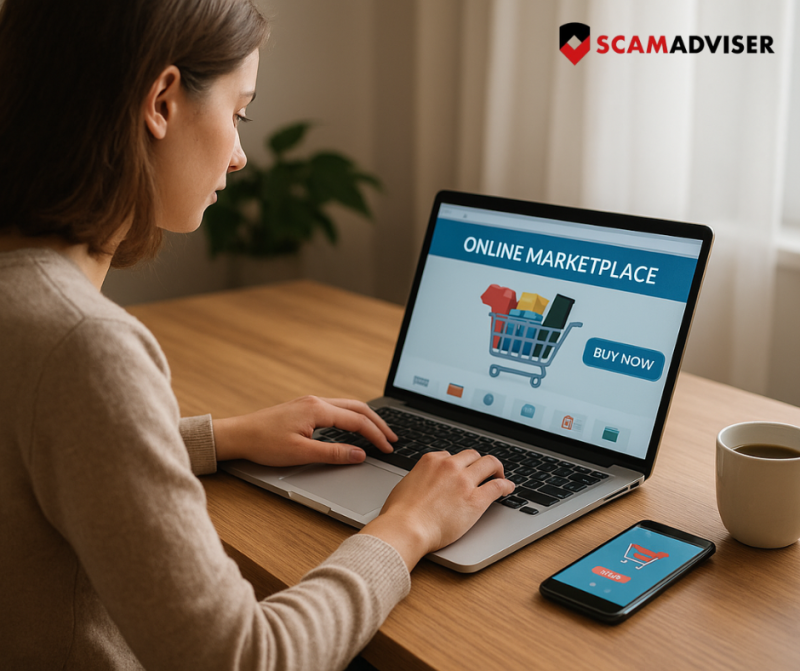
Online marketplaces have become the backbone of modern shopping. Instead of owning inventory, these platforms act as digital middlemen — connecting buyers and sellers while managing secure transactions. From household essentials to luxury fashion, almost anything can now be found online with a few clicks.
The appeal? Convenience, endless product variety, 24/7 access, and global reach. For sellers, online marketplaces cut down advertising costs, widen customer bases, and offer built-in trust signals. For buyers, it’s the promise of selection and speed.
Some marketplaces are general (Amazon, Walmart), while others thrive in niches like handmade goods (Etsy) or fashion (ASOS).
| Marketplace | What It Sells |
| Amazon | General products, from groceries to electronics |
| Walmart | General goods, groceries, household items |
| eBay | Auctions, resale items, general products |
| ASOS | Fashion and beauty products |
| AliExpress | General goods, often from international sellers |
| Etsy | Handmade, vintage items, crafts |
| Target | General goods, popular in the US |
| Wayfair | Popular for furniture and home décor |
| Shopee | Variety of goods, popular in Asia |
| Newegg | Electronics, gaming, hardware |
(The list is in no particular order)

Amazon.com remains the world’s largest online marketplace, offering just about everything under the sun. From books, electronics, and home appliances to groceries, clothing, and even prescription medications, Amazon continues to expand its product lines. Its subscription service, Amazon Prime, adds fast delivery, music and video streaming, and exclusive shopping deals. With fulfillment centers worldwide and advanced AI-driven recommendations, Amazon has set the standard for convenience in online shopping.
Walmart Inc., the American retail giant, has successfully merged its massive chain of hypermarkets with its growing e-commerce arm. Walmart’s online marketplace sells everything from groceries and electronics to furniture and fashion. Known for competitive prices, Walmart has gained ground against Amazon in the U.S. through next-day delivery, curbside pickup, and partnerships with local delivery services.
eBay Inc. continues to thrive as the go-to auction and resale platform. Originally built on auction-style bidding, eBay now also offers “Buy It Now” fixed-price listings. It is a global marketplace for both consumer-to-consumer (C2C) and business-to-consumer (B2C) sales. Whether it’s collectibles, refurbished electronics, or new goods, eBay’s strength lies in variety and international reach. Sellers pay small listing fees, while buyers enjoy protections like the eBay Money Back Guarantee.
ASOS plc, based in London, is one of the leading global fashion and beauty marketplaces. It sells over 850 brands, along with its own ASOS-designed clothing line. The platform is particularly popular with Gen Z and millennials for its trendy, affordable fashion. ASOS ships worldwide from distribution centers in the UK, U.S., and Europe, offering fast delivery and easy returns. Its mobile-first approach and sustainability focus (such as recycled clothing lines) keep it relevant in 2025.
Owned by Alibaba Group, AliExpress remains a favorite for shoppers hunting bargains directly from manufacturers and small businesses in China. It connects sellers with customers worldwide, offering everything from gadgets to clothing at extremely competitive prices. While delivery times can be long, AliExpress has improved global logistics in recent years with AliExpress Premium Shipping. It is particularly popular for affordable electronics and accessories.
Target Corporation, a U.S. retail giant, has rapidly expanded its e-commerce marketplace. Known for stylish yet affordable home goods, clothing, and groceries, Target’s online store mirrors its physical locations with a wide product range. Features like same-day delivery through Shipt, in-store pickup, and seasonal collections make Target a strong player in 2025’s digital retail landscape.
Newegg Commerce, Inc. is still a top destination for technology enthusiasts. Specializing in computer hardware, electronics, gaming gear, and smart home products, Newegg serves customers globally. Its customer review system, daily tech deals, and marketplace for third-party sellers have made it a trusted site for both DIY builders and gamers.
Wayfair Inc. dominates the online furniture and home décor space. Its website offers millions of items, from couches and dining tables to lighting, outdoor gear, and home improvement tools. Known for frequent sales, free shipping on large orders, and visualization tools (like AR-based room previews), Wayfair has reshaped how people buy furniture online.
Etsy, Inc. continues to be the go-to platform for handmade, vintage, and unique items. From jewelry and clothing to personalized gifts and craft supplies, Etsy is home to millions of small business sellers worldwide. Vintage goods must be at least 20 years old, while handmade items showcase the creativity of independent artisans. In 2025, Etsy is still synonymous with one-of-a-kind finds.
Shopee, founded in Singapore, has become one of Asia’s biggest online marketplaces. It offers general goods ranging from electronics and fashion to groceries and household essentials. With a strong presence in Southeast Asia and expanding operations in Latin America, Shopee combines competitive pricing with a mobile-first shopping experience and integrated digital wallets.
Fraudsters haven’t slowed down in 2025. Counterfeit goods, phishing websites, and fake seller accounts are rampant. For example, shoppers continue to fall victim to Amazon scams, where fraudsters create convincing lookalike pages or send fake delivery updates.
To understand how scams work in e-commerce, you can also explore resources from trusted authorities like the Federal Trade Commission (FTC) or Stanford University’s Cyber Policy Center for academic research.
Here are some of the biggest risks:
The good news? Staying safe is possible with a few smart habits:
Pro tip: Before shopping on a new site, run it through ScamAdviser.com or download the ScamAdviser app. A 10-second check could save you hundreds of dollars.
Online marketplaces in 2025 make shopping faster, easier, and more global than ever. But with convenience comes risk — from counterfeit goods to outright scams. By sticking to trusted platforms, using secure payment methods, and staying alert to red flags, you can enjoy the benefits without the headaches.
Shopping smart is the new shopping safe.